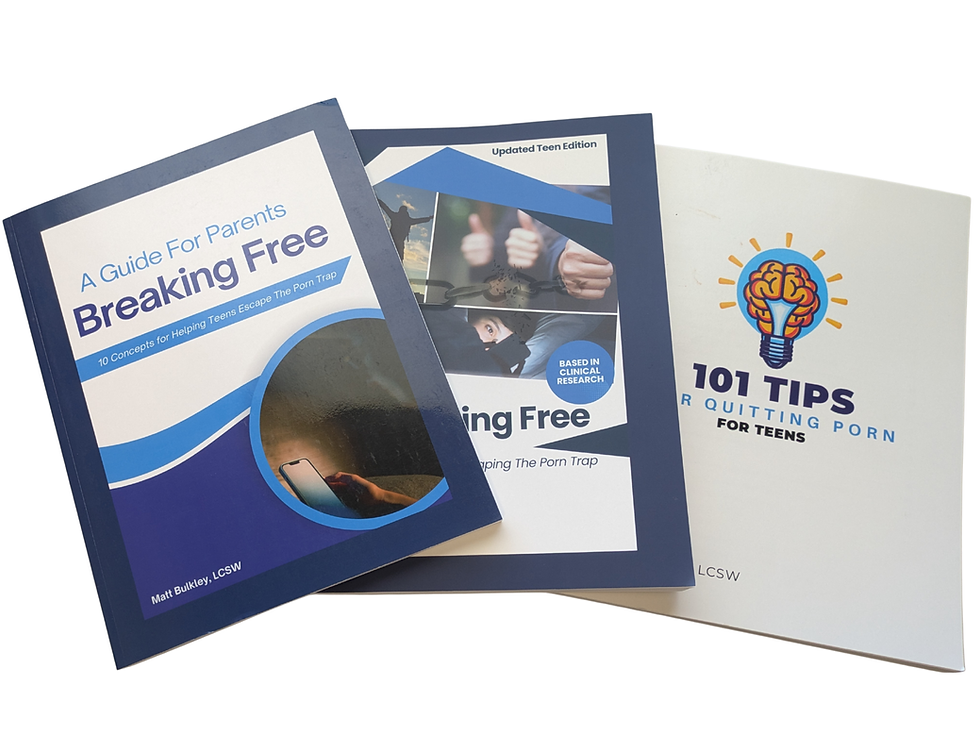Understanding the Link Between Pornography and Increased Risk-Taking in Teens
- Matt Bulkley

- Sep 27
- 4 min read
In today's digital world, pornography is just a click away, and this reality can worry many parents of teenagers. As adolescents shape their identities, they encounter many images and narratives that showcase distorted views of relationships and sexuality. This exposure can lead to increased risk-taking behaviors that have significant consequences for both their physical and emotional health.
To address the concerns surrounding this issue, parents must grasp the relationship between pornography and risk-taking. This post will investigate how exposure to pornography can lead to risky sexual behaviors and thrill-seeking patterns in teens.
The Impact of Pornography on Teen Behavior
During adolescence, young people strive to understand healthy relationships and personal boundaries. Sadly, the unrealistic situations portrayed in pornography can warp their view of what a healthy sexual relationship looks like.
For example, research by the American Psychological Association revealed that 43% of teens who watch pornography frequently start engaging in sexual activities earlier than their peers. This early involvement can lead to severe negative outcomes, such as 25% of sexually active teens contracting sexually transmitted infections (STIs) each year, and a percentage of pregnancies that are unintended.
The sensational nature of pornography often creates unrealistic expectations. Teens may feel pressure to emulate on-screen acts, resulting in risky behaviors they may not fully comprehend. For instance, they might experiment with unprotected sex, which can increase their risk of STIs and unintended pregnancies.
The Cycle of Risk-Taking
The thrill-seeking behavior linked to pornography can spiral as teens chase more adventurous sexual experiences. A teenager who starts with casual encounters may eventually look for riskier activities, such as unprotected sex or using drugs to heighten their experiences. This cycle of escalating risk can place their health in jeopardy and lead to emotional issues, such as guilt, anxiety, or depression.
For example, a survey showed that 40% of teens who engage in risky sexual behavior report feelings of regret afterward. It highlights the emotional turmoil that can accompany decisions made under peer influence or societal expectations.
The Role of Peer Influence
Peer pressure significantly shapes risk-taking behaviors among adolescents. As teens seek to fit in, they may feel compelled to participate in activities they would typically avoid. When risky sexual behavior is common among their friends, it becomes even easier to succumb to that pressure.
For instance, a group of friends openly discussing their sexual exploits might lead one teen to feel compelled to participate, even if they are uncomfortable with the idea. This can create a dangerous environment where the need for acceptance outweighs sound judgment, leading to choices with long-lasting effects.
Open Communication is Key
Establishing open lines of communication with your teen is vital for addressing issues surrounding pornography and risky behaviors. Creating a conversation-friendly atmosphere helps teens express their thoughts on sexuality and how it contrasts with reality.
Encourage your teen to share their perspectives on what they see in pornography and discuss how it may not reflect genuine relationships. Talk about the unrealistic portrayals and possible consequences, guiding them to develop a more informed view of relationships.
Setting Boundaries and Providing Guidance
In addition to open discussions, it is essential to set clear boundaries and provide guidance. Discuss the significance of consent, respect, and healthy relationships, emphasizing that they should wait until they are emotionally and physically ready for any sexual encounter.
Implement structured guidelines around internet usage to manage access to inappropriate content. While it might not be feasible to entirely remove exposure to pornography, helping your teen develop critical thinking to analyze what they see can aid their decision-making.
Seeking Professional Help
If you suspect your teen is grappling with a pornography addiction or engaging in dangerous behaviors, consider seeking professional assistance. Therapists or counselors who specialize in adolescent issues can offer valuable support and guidance for both parents and teens. Therapy Associates provides a specialized treatment program to address teen pornography addiction. For cases that involve safety or risk issues such as sexual acting out, sexual abuse, reckless and dangerous online behaviors including sextortion, catfishing, sexting or seeking online hook ups or encounters with strangers, a more intensive intervention such as Star Guides may be needed.
Professional intervention can help teens confront underlying challenges related to their actions, develop healthier coping strategies, and foster a positive self-image. Additionally, therapy provides a safe space for teens to freely explore their feelings without fear of judgment.
Navigating Challenges Together
Understanding the connection between pornography and increased risk-taking in teens is a complex issue that demands attention and awareness from parents. By fostering open communication, establishing boundaries, and seeking professional help when needed, you can guide your teen toward healthier choices.
As parents, it is crucial to remain attentive and proactive in addressing these challenges. Equipping your teen with the knowledge and skills necessary to navigate these issues will support them in building a foundation for healthy relationships and a positive self-view.

By remaining informed and engaged in your teen's life, you can help them make decisions that prioritize their health and overall well-being.









Comments